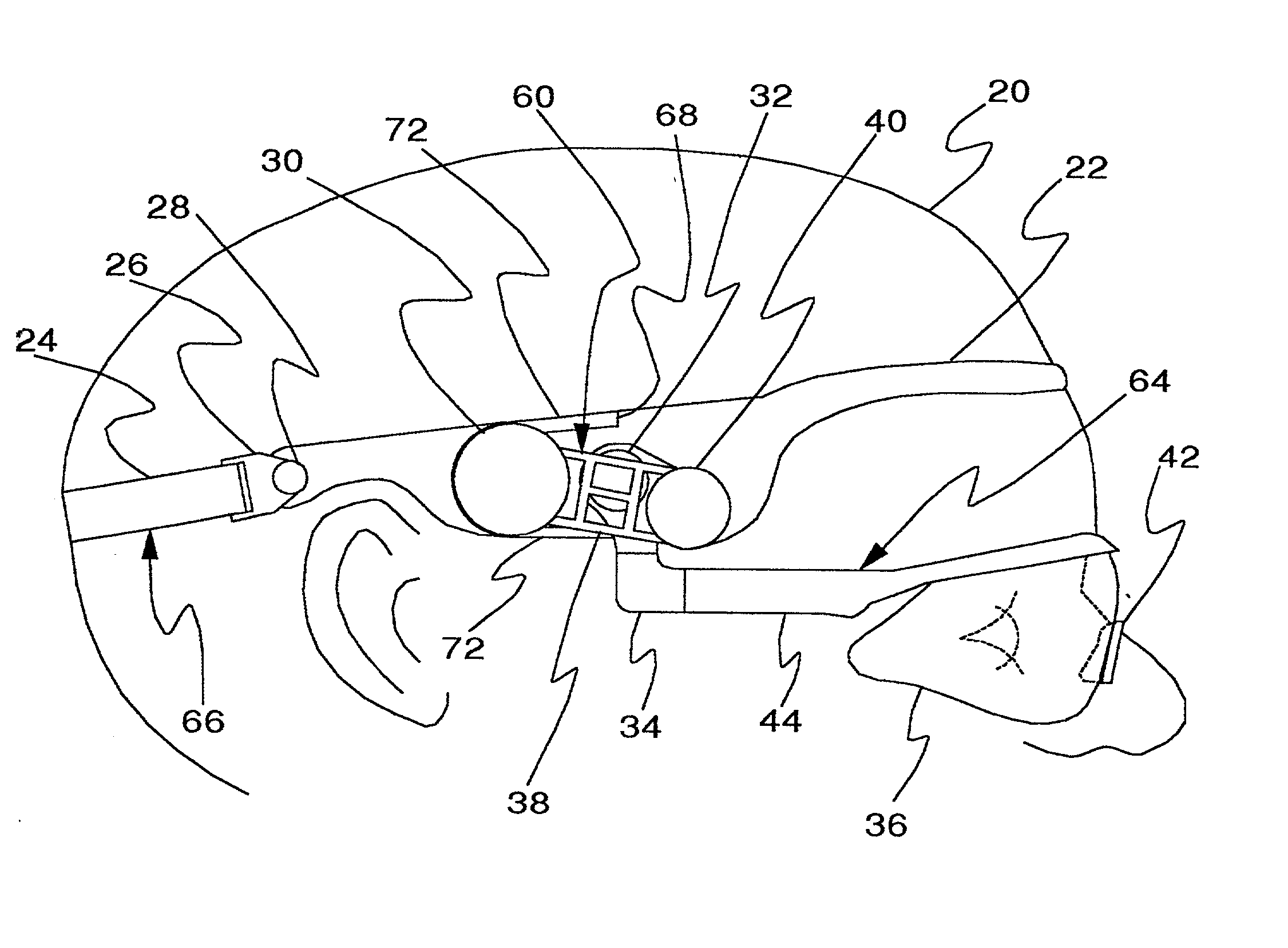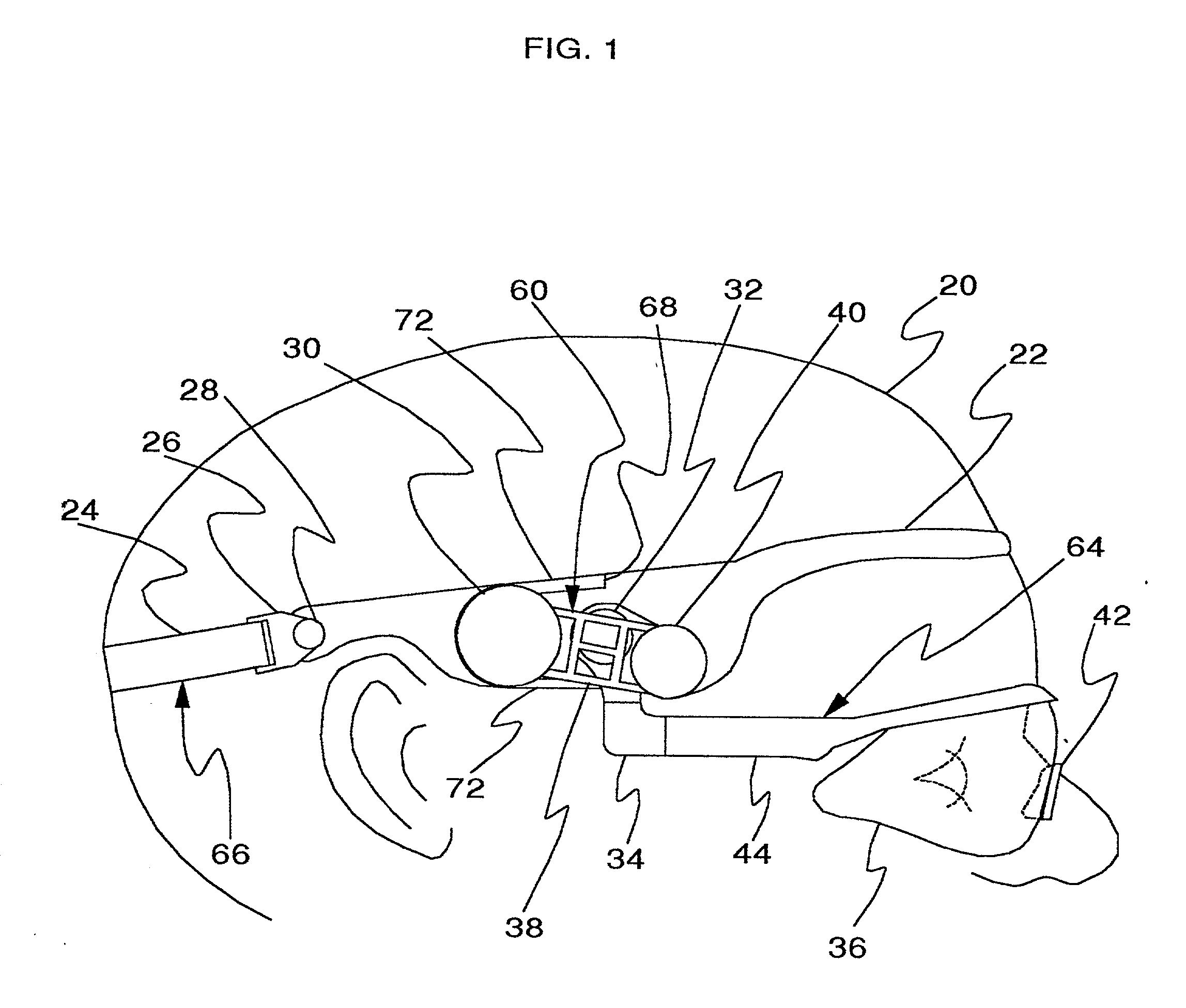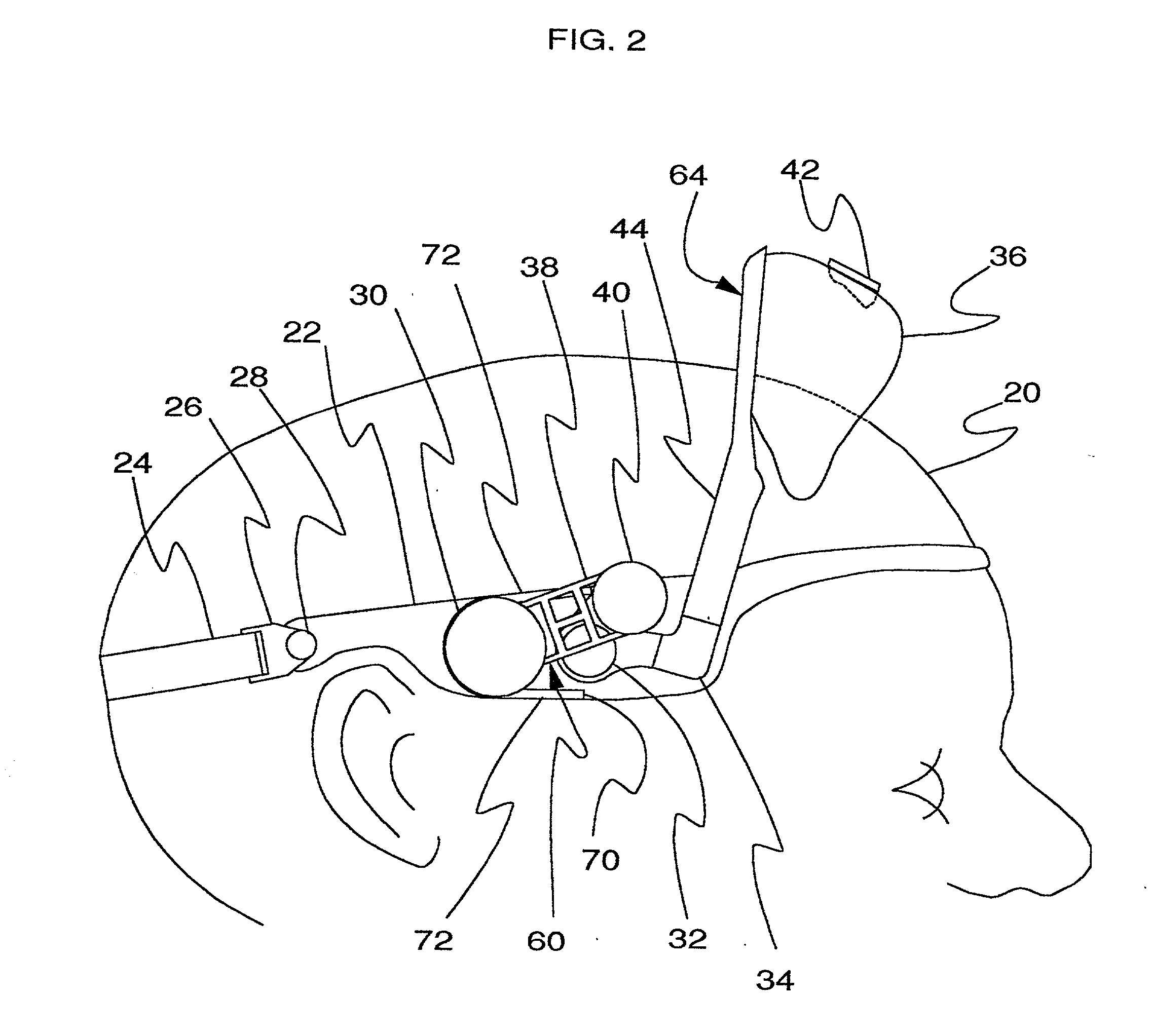Elastomeric tensioning system for head and ear mounted eyewear
a tensioning system and elastomeric technology, applied in the field of athletic sunglasses, can solve the problems of inability to conveniently remove and store sunglasses from the viewing position, ear and nose soreness, and the shape and construction of the human head do not lend themselves well to attaching ordinary sunglasses to the protruding protruding parts
- Summary
- Abstract
- Description
- Claims
- Application Information
AI Technical Summary
Problems solved by technology
Method used
Image
Examples
Embodiment Construction
[0089] The following embodiments of this invention are not the only ways of achieving the described features by others skilled in the art.
[0090] The following description of some of the preferred embodiments of this invention will make reference to the accompanying figures. Where an individual mechanical part is shown in more than one figure, it is assigned a common reference number for ease of identification and understanding.
[0091] FIG. 1 shows the basic invention secured on the head of the wearer (20) in the viewing position. FIG. 2 shows the basic invention secured on the head of the wearer (20) in the out of viewing position. The invention consists of four basic parts: head mount support (22), FIG. 5, elastomerically operated tensioning system (60), FIG. 1 and FIG. 6, lens assembly (64), FIG. 5, and pivoting adjustable elastic strap assembly (66) FIG. 5.
[0092] Referring to FIG. 5, head mount support (22) is a one piece plastic injection molded part 0.060 inches thick, 14 inches...
PUM
 Login to View More
Login to View More Abstract
Description
Claims
Application Information
 Login to View More
Login to View More - R&D
- Intellectual Property
- Life Sciences
- Materials
- Tech Scout
- Unparalleled Data Quality
- Higher Quality Content
- 60% Fewer Hallucinations
Browse by: Latest US Patents, China's latest patents, Technical Efficacy Thesaurus, Application Domain, Technology Topic, Popular Technical Reports.
© 2025 PatSnap. All rights reserved.Legal|Privacy policy|Modern Slavery Act Transparency Statement|Sitemap|About US| Contact US: help@patsnap.com



